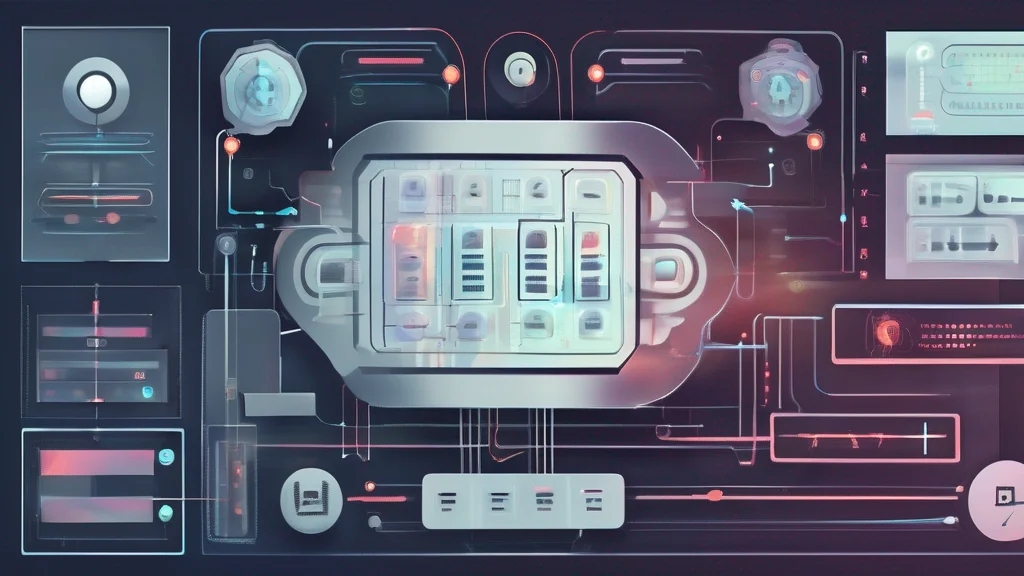The Think Toggle Dilemma: Streamlining AI Deliberation for Natural User Interaction
Rethinking AI Deliberation for Natural User Interaction

- Introduction of think toggles in AI systems.
- Challenges of manual toggles in user interaction.
- Auto-deliberation as a more intuitive solution.
- Balancing developer needs with user experience.
- Future implications for AI interaction design.
Introduction: The AI’s Thinking Conundrum
The rapid evolution of artificial intelligence (AI) is akin to an exhilarating rollercoaster ride. With each new version and update, we’re introduced to features that redefine our interaction with machines. Claude 3.7, the latest in the series, exemplifies this leap forward. Known for its advanced code output and a new ‘Extended mode’ that allows for a more deliberative response style, it’s a remarkable advancement. However, it also introduces a feature that might seem counterintuitive to the seamless AI interaction—manual think toggles.
The think toggle is a feature that requires users to decide when the AI should engage in deeper, more complex thought processing, as opposed to providing instant, off-the-cuff answers. While this might sound like a useful tool, it raises questions about user experience, efficiency, and the very nature of AI communication.
The Evolution of AI Interaction
Before delving into the implications of think toggles, it’s crucial to understand how AI interaction has evolved. Traditional AI systems were largely rule-based, requiring explicit instructions to perform tasks. With the advent of machine learning, and more recently deep learning, AI has become significantly more intuitive, capable of understanding context, and predicting user needs with minimal input.
The goal has always been to create AI that can engage in human-like conversations—seamless, intuitive, and contextually aware. This is where the introduction of a manual think toggle presents a paradox.
Manual Think Toggles: A Step Backwards?
Imagine asking a friend a question. Depending on the complexity, they might respond immediately or take a moment to think. Crucially, you don’t need to instruct them on how much time to take. This natural flow is what AI should aim to replicate.
The manual think toggle, however, introduces an unnatural element into this interaction. Users must decide when the AI should think deeply, disrupting the flow of conversation. This is not only cumbersome but also places the onus on the user to predict the complexity of the response needed.
As Nilock, a developer who has taken Claude 3.7 for a spin, points out, “A manual think toggle betrays some stupidity in the overall mechanism. It also severely dampens the ability for conversations to naturally wander between periods of lighter and deeper substance.”
A More Natural Approach: Auto-Deliberation
What if AI could assess the complexity of a query and decide autonomously how much processing power to devote? This approach, already conceptualized by developers like Nilock, involves using the AI to assign a complexity score to each query. If the score exceeds a certain threshold, the AI engages in deeper thinking, without needing user intervention.
The Mechanics of Auto-Deliberation
Here’s how it works:
Complexity Assessment: The AI analyzes the query to determine its complexity, assigning a score from 0 to 100.
Response Strategy: If the complexity score is below a predefined threshold, the response is immediate. If it’s above, the AI allocates resources for deeper deliberation based on the score.
Dynamic Resource Allocation: The AI adjusts its ’thinking’ budget proportionally to the complexity score, ensuring efficient use of resources.
This model not only mirrors human interaction more closely but also enhances user experience by eliminating unnecessary decision-making.
Balancing Developer Preferences and User Experience
Developers, particularly in AI research and development, often appreciate tools that offer extensive customization. However, consumer-facing applications require simplicity and ease of use. The think toggle, while a powerful tool for developers, can be a burden for everyday users.
As Nilock aptly notes, “Developers love knobs, and frontier AI research labs seem like developer-heavy organizations. But consumer tools can’t have a lot of knobs.”
The Future of AI Interaction: Seamless and Intuitive
The future of AI interaction lies in creating systems that require minimal user intervention while providing maximum utility. By implementing auto-deliberation features, developers can create AIs that are not only more intuitive but also more effective in delivering meaningful responses.
Potential Challenges and Counterarguments
Of course, there are challenges to implementing such a system. One concern is the computational cost: auto-deliberation may require more processing power, potentially increasing costs. Additionally, there’s the question of accuracy—can AI reliably assess the complexity of every query?
Yet, these challenges are not insurmountable. With advances in AI and machine learning, systems are becoming increasingly adept at nuanced understanding. Moreover, the potential benefits in user experience and satisfaction could outweigh the costs.
Conclusion: Towards a More Human-Like AI
As AI continues to evolve, so too must our approach to designing its interactions. The introduction of think toggles in Claude 3.7 highlights the need for a more nuanced, intuitive approach to AI deliberation. By leveraging auto-deliberation, we can bridge the gap between human-like interaction and AI efficiency, enhancing user experience and paving the way for more sophisticated AI systems.
The question remains: how can developers further refine AI systems to balance user control with seamless interaction? As we continue to push the boundaries of AI, this will be a critical area of exploration.